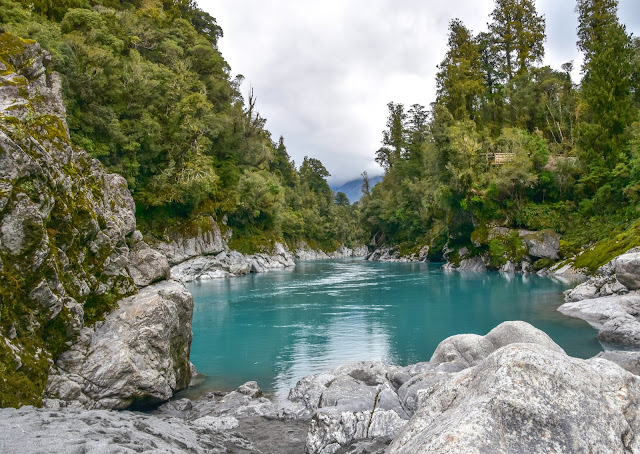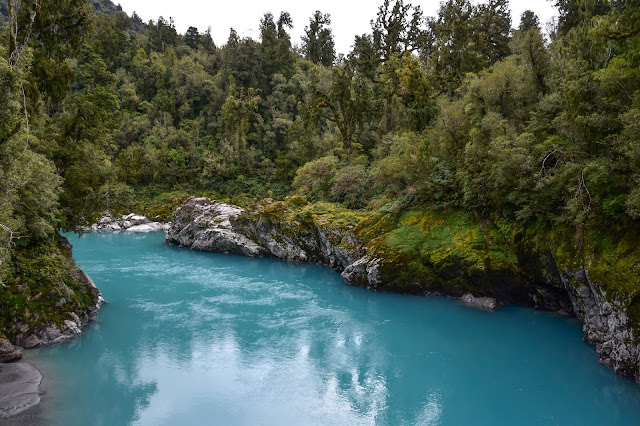The Hokitika Gorge has been on my ‘Must See’ list for a while. Last week, I was finally able to tick it off. Was it worth the wait? Absolutely!
Leaving Hokitika, on the 30-minute drive to the gorge, I wondered if being a cloudy day might affect the colour of the water. I'd read the river is a brilliant teal colour on sunny days and a milkier, less vivid blue on cloudy days. But, it turned out, I had nothing to worry about. Sunshine or clouds, the Hokitika Gorge is stunning in any weather.
Despite it being the school holidays there were lots of empty car parks. Maybe that was due to there being fewer overseas tourists due to covid.
I walked a short distance through native bush before arriving at a viewing platform overlooking the gorge. This is the spot that I’d seen lots of photos taken from. So, just like others before me, I lifted my camera and clicked away.
 |
| Looking towards the first swingbridge. |
I continued walking further along the track, across more boardwalks, with glimpses of the river below. It wasn't long before I came to a second suspension bridge, recently built in 2020. At 90-metres long, it's one of New Zealand's longest suspension bridges (The Buller Gorge being the longest at 110 metres).
To the right of the bridge, the foothills of the Southern Alps can be seen, while to the left is the view of the Hokitika Gorge.
 |
| View from one side of the swingbridge - down the Hokitika Gorge. |
 |
| Looking towards the foothills of the Southern Alps. |
From the bridge, it’s an easy half-hour walk through native forest back to the car. I know two dogs that would have loved to have been with me on this walk, but it's DOC, so no dogs allowed.
Here's an interesting piece of information I found and copied from a DOC, Conservation Blog about moose being released at the Gorge in 1900.
Hokitika Gorge was the scene of the first release of moose in New Zealand in 1900 when fourteen moose calves were sent to New Zealand from Canada. Only four survived the journey and were released at the Gorge, adapting to the new conditions and diet under the watchful eye of a full-time minder. After a few weeks, the two bucks headed to the high country, while the two does took up residence in the lower reaches of the Gorge. According to legend, local farmer, Bert Cropp shot one of the moose after she made a nuisance of herself in the gardens around Kowhitirangi. Moose sightings were reported until 1914, and there is no evidence that they ever bred.









Love the photos, I'm definitely putting it on my list for a visit.
ReplyDeleteThanks 😊I'm sure you will enjoy your visit.
Delete